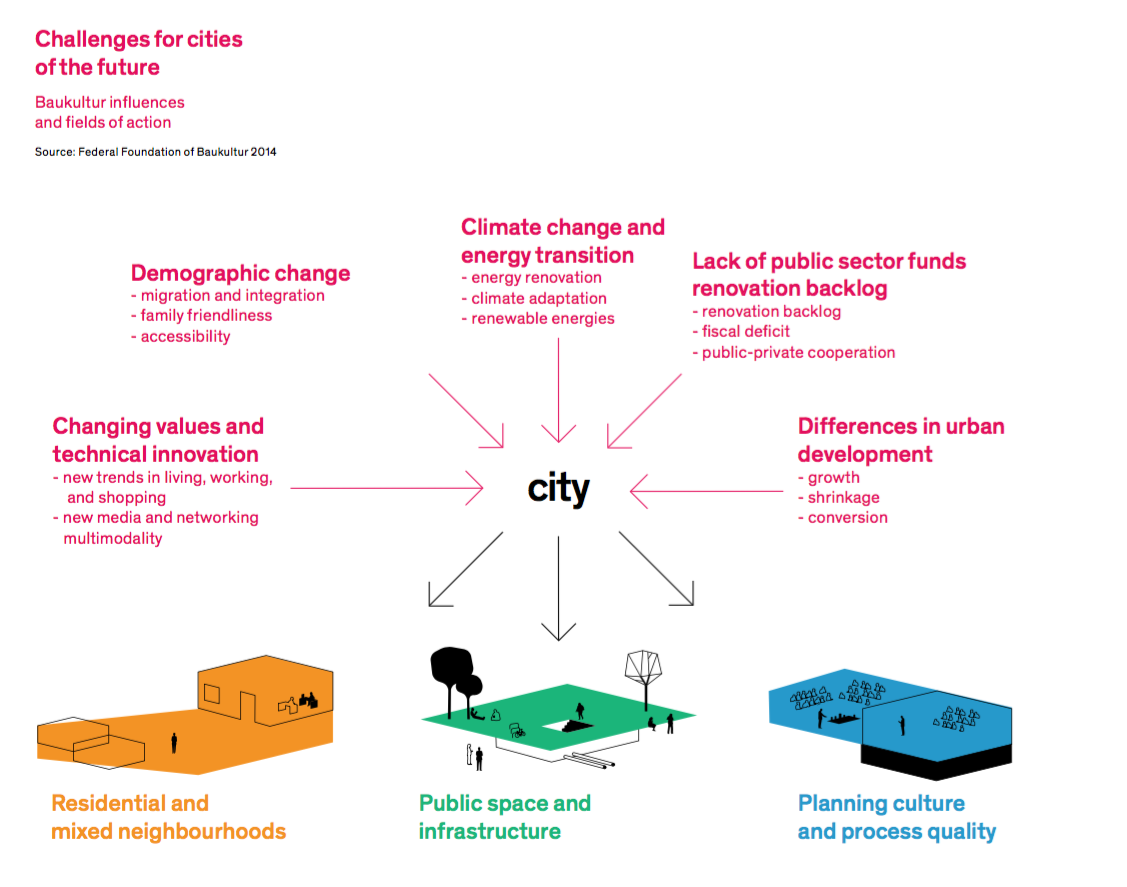Content
Baukultur Report 2014/15

In addition to having places of interest and of cial parameters, cities also have a Baukultur identity. Our everyday lives, social coexistence, and moods are positively or negatively affected by the built environment. Thus Baukultur – in addition to social, environmental, and economic implications – also has an emotional and aesthetic dimension. It is a social process of production, appropriation, and use and requires a broad understanding of qualitative values and goals.
What is the state of Baukultur’s social value in 2014–15 from the perspective of citizens and creators of Baukultur? How effective is the public sector’s role model function?
What can and must we do to maintain and improve the quality of life in our cities for future generations? The Baukultur Report 2014/15 gives recommendations for action, and illustrates solutions for policy, planners, and other Baukultur stakeholders.
